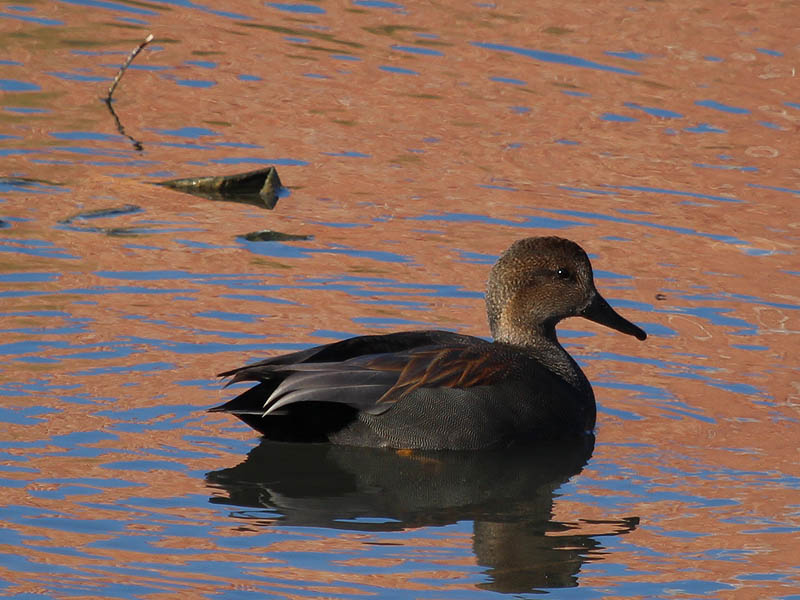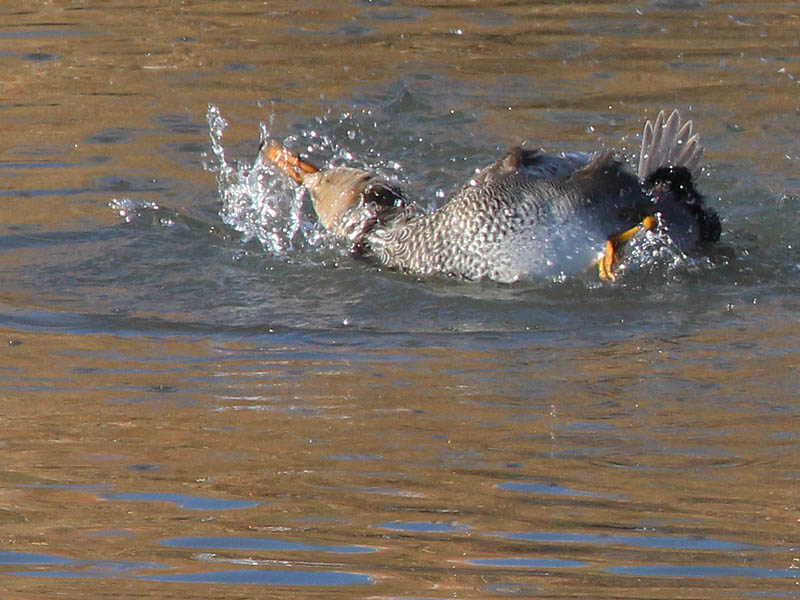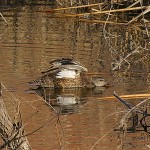These attractive little ducks are known as Gadwalls. Male and female Gadwalls are present in the congregation and are easy to tell from one another because the females have orange on their bills whereas the male’s bill is uniformly black.
The male Gadwalls in these pictures are displaying various stages of breeding plumage development. Some are further along than others. Regardless of how far along they are, the breeding plumage of the male Gadwall is much more subtle that that of other closely related ducks. There is no bright metallic colors as is the case with Mallards and Northern Shovelers. There is no ornate coloration patterns as with Woods Ducks.
Instead there is an understated beauty that requires a closer appraisal to truly appreciate. The male Gadwall displays a neutral palette of earth toned browns and grays. Subtle but intricate patterns are scribed on the duck’s head, neck, and breast. Wing feathers are delicately elongated and highlighted soft shades of pink. At a distance these colors mute away to create an effective camouflage. Up close they are beautiful.





Gadwalls are known as “dabbling” ducks. This term refers to the way Gadwalls and other similar ducks feed. Dabbling ducks are surface feeders. They consume aquatic vegetation that is accessible from the waters surface. In other words, these ducks do not dive and swim under water like some others will. They reach plants on the bottom of shallow pools of water by upending their bodies so that their tails are in the air and their heads are submerged. This is the “dabbling” behavior by which the birds are categorized.










Before I wrapped up at this location I was treated to exhibition of Gadwall bathing by a pair of males on the far side of the pond. So exuberant was one of the Gadwalls that he flipped himself over and rolled bodily in the water to complete his bath.











